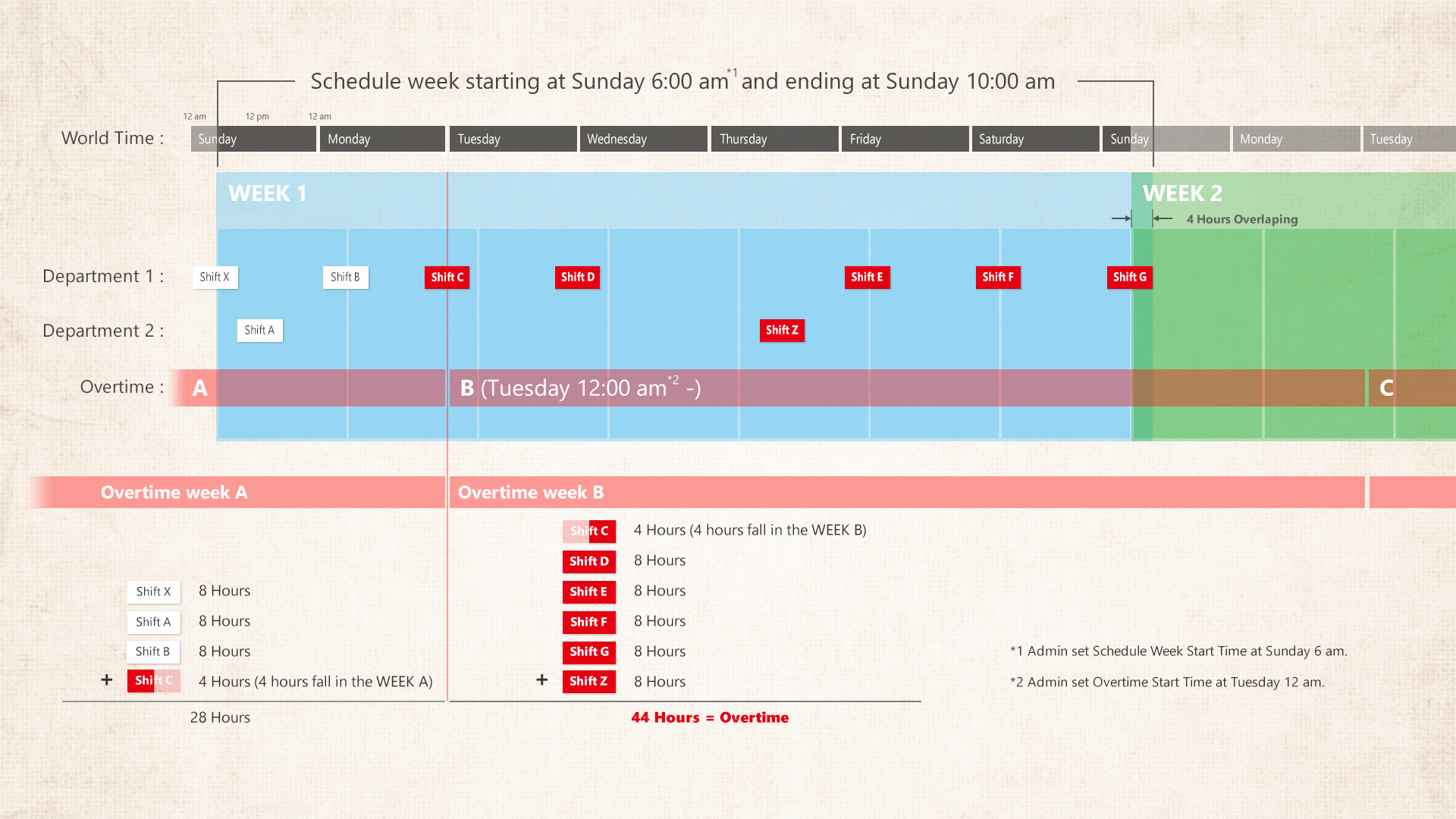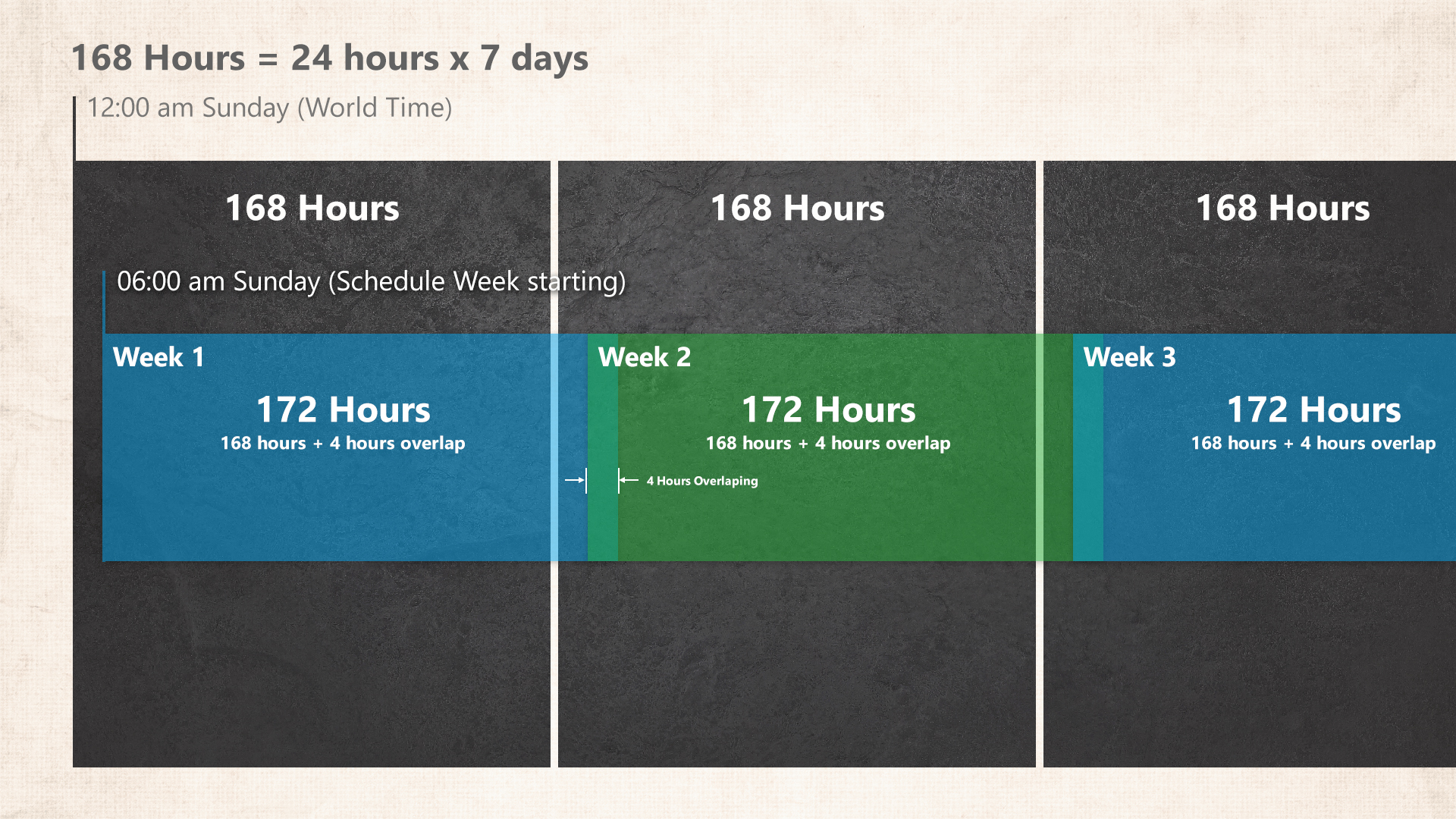Overtime Calculations
Overtime calculations can be a tricky issue. The following information is meant to help you understand how EasyShifts calculates your overtime hours.
First, it's very important to understand the difference between an "overtime week" and a "scheduled week."
According to FLSA standards, an "overtime week" is a period of 7 24 hour days or 168 hours.
A "Scheduled week" is simply the weekly schedule that you see in EasyShifts. A scheduled week can exceed 168 for easier scheduling.
So an "overtime week" and a "scheduled week" are not the same thing and likely will not overlap perfectly.
Let's use some images to help us see this.
Image 1:
Each gray box represents 1 week according to world time. Each week is 168 hours (7 24 hour days) and begins Sunday at 12 am and goes to the following Sunday at 12 am.
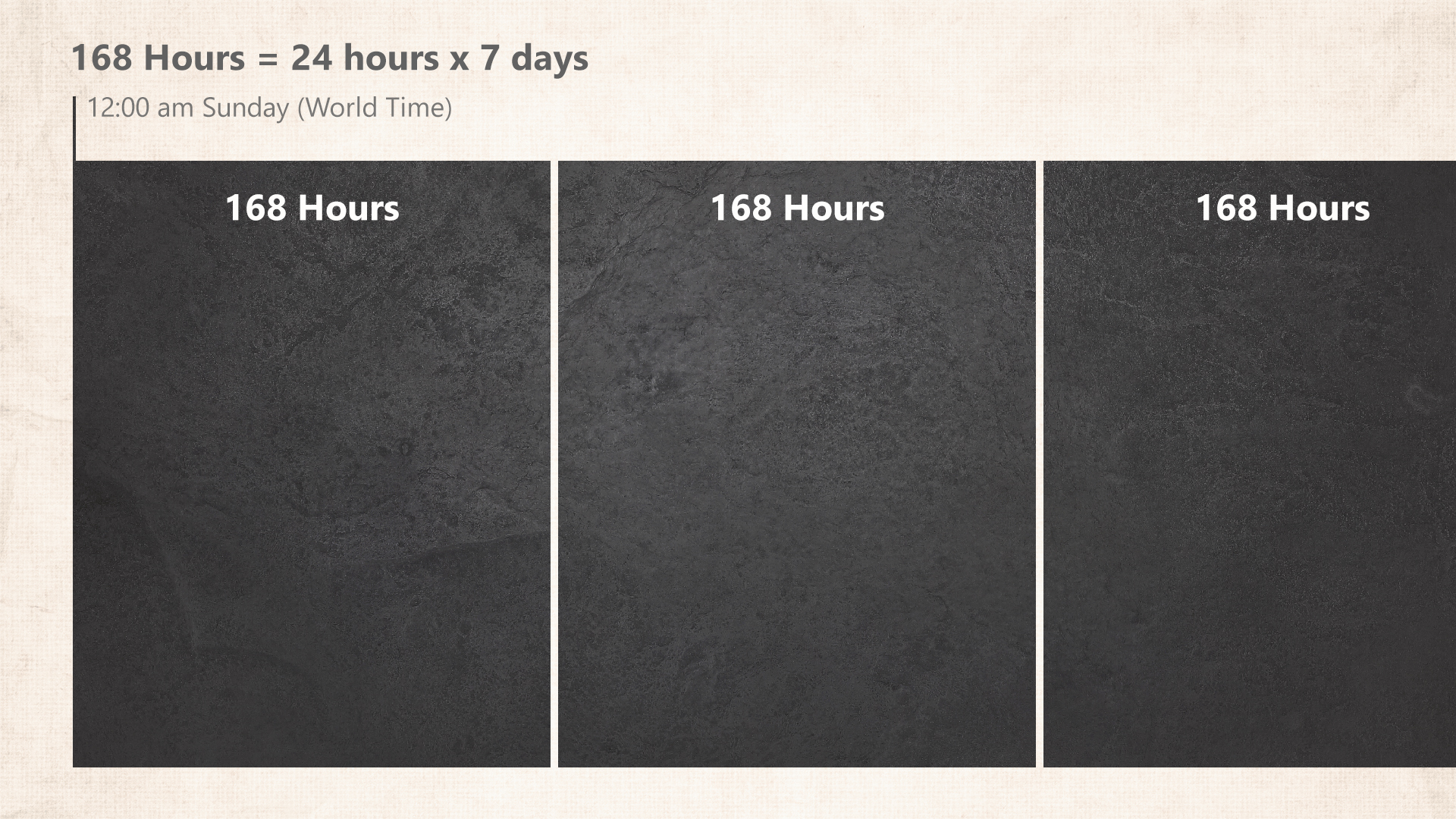
Image 2: Scheduled Weeks
The blue and green boxes represent your "scheduled weeks." In this example the week begins Sunday at 6am and ends the following Sunday at 10am. This scheduled week has 172 hours. (Start time and length of "scheduled week" can be found in "Templates Schedules > Modify Structure")
Image 3: Overtime Weeks
The pink boxes represent your "overtime week." In this example, the overtime week starts on Tuesday at 12am and goes to the following Tuesday at 12am. Every "overtime week" is exactly 168 hours.
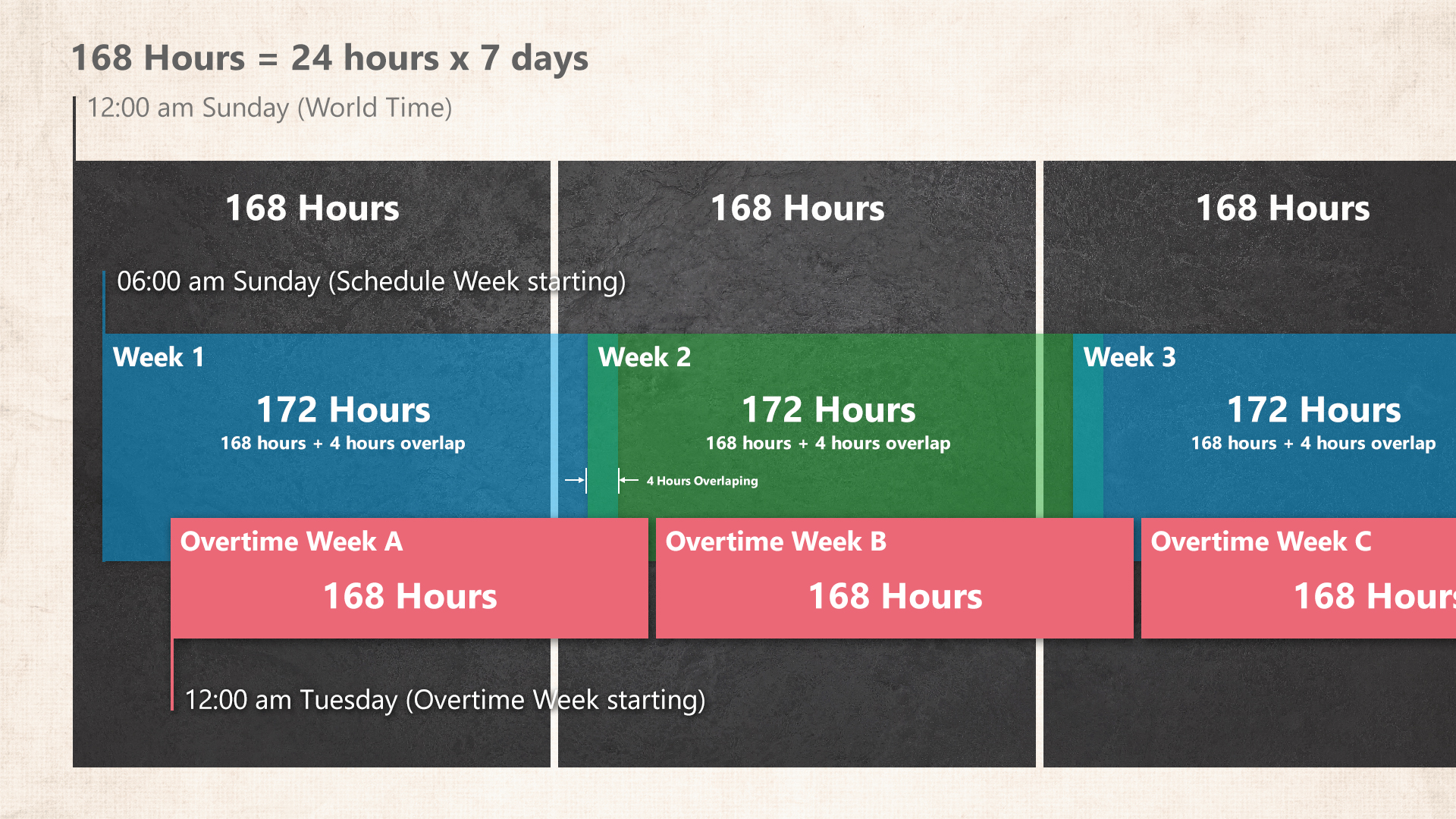
Key Takeaway:
Your "scheduled week" and "overtime week" likely will not overlap exactly. For example, the "scheduled week" labeled "week 2" in the image, will include shifts from "overtime week a" and "overtime week b."
Image 4: Identify Which "Overtime Week" Your Shifts Are In
The blue rectangle represents your "scheduled week" starting Sunday at 6 am and ending the following Sunday at 10am. Shifts A, B, C, D, E, F, G and Z will appear on your "scheduled week" when looking at the Department Schedule or Personal Schedule page. If each shift were 8 hours and 4 hours of shifts X and G are visible on your "scheduled week," you might assume that this employee has 64 hours. However, if you look at "overtime week B" you'll notice that only shifts D, E, F, Z, and parts of shifts C and G fall into this overtime week. Shifts A, B, X and part of C are in "overtime week a" and are therefore not added to "overtime week b."
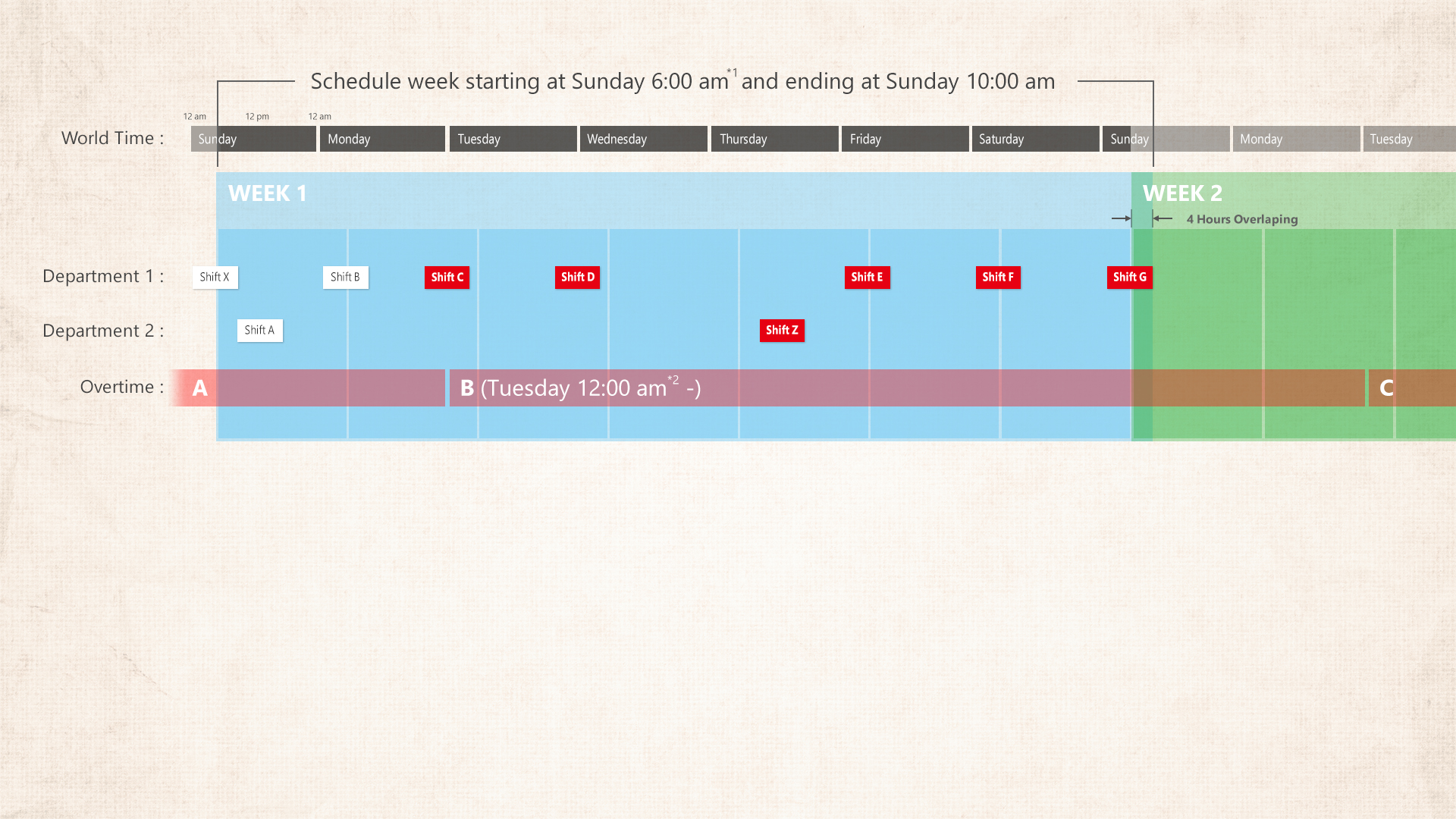
Image 5: Calculating Overtime Hours
This image clearly shows where the defining line is between overtime weeks. Shifts X, A, B, and part of C falls into "overtime week a" and totals 28 hours. Shifts C, D, E, F, G, and Z fall into "overtime week b" and total 44 hours.
